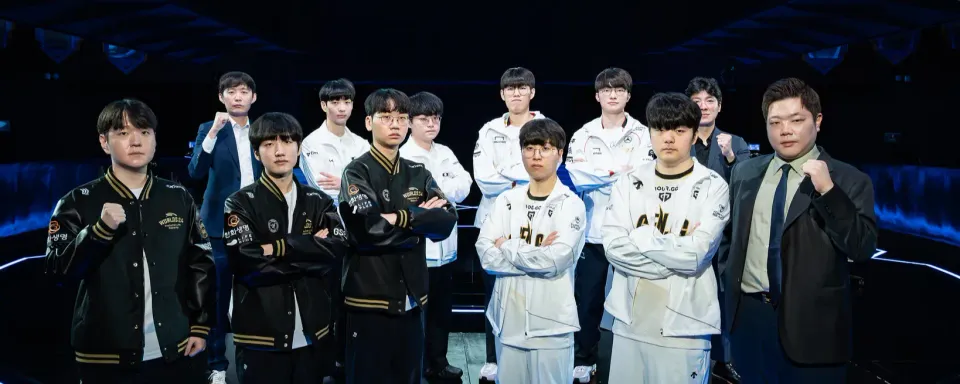- MarnMedia
Article
15:40, 24.10.2024

League of Legends is one of, if not the, biggest esport in the world. Millions of fans from across the globe tune in to watch their favorite players. Whether they're a T1 fan hoping for another world title, or a North American fan wishing for worlds success, there's a team for everyone. The exctiment stems from having multiple regional leagues to watch, meaning there will always be LoL esports available to you throughout the week.
Let's explore the creation of the regional leagues in League of Legends and how they've shaped some of the best teams in the world from across different regions.
Emergence of Regional leagues in LoL

In 2013, Riot make the ambitious decision to consolodate within, moving away from the third party events and Worlds qualifiers to form domestic leagues. In this article we will focus solely on the emergence of the four major regions. Those being the LCK (South Korea), the LPL (China), the LEC (EMEA) and the LCS ( North America).
With League of Legends on the rise following another successful world championship, Riot decided it was time to keep their esport in house to oversee these domestic leagues. And while third party companies still played part in the early, stages, particularly the east.
The format for each of the leagues varied, the East specifically focussing on best-of-three competition while the West for the longest time sticking to an outdated best-of-one format. For 2025, the landscape of the scene will change once more. Riot announced they will be moving to three international events next year. One at the start of the season, MSI, and Worlds 2025. This likely means all regions will convert to a three-split format. The LEC had already adopted this three-split system, though it has come under much scrutiny for how it has worked.
Increasing the level of competition
The quality of gameplay has increased significantly over the years. China has emerged to be a powerhouse region alongside the LCK, while the West battles for the third best region internationally. This has been due to the implementation of development systems from both the organization and in some parts the leagues to ensure local talent get their moment under the big lights.
FlyQuest is the most recent example of a team that nurtured its talent and was able to take on the best in the world. Massu was a player that was tipped to be the next-best player in North America. He was groomed by FLY in the NACL - North America's developmental league. From there, he was able to embed into the FlyQuest culture and their systems, and before he knew it, he was ready to take the very best the league has to offer, even winning a domestic title in his first season.

Teams are starting to value the development of talent as opposed to buying the next big star. FlyQuest themselves found that out the hard way, seeing their super team fail, finishing outside of the playoffs, and unable to make worlds. Therefore, FLY took a step back and entrusted in young talent and surrounded them with two experienced imports to help show them how the game can be played at a higher level. From there, FlyQuest prospered, making it to the top eight at Worlds 2024 and pushing Gen.G, the pre-tournament favorites, to five games.
How teams have managed finances
It's safe to say, specifically using North America as an example, as a region that didn't understand the value of money. They had the VC money to burn, and burn they did. Instead of creating a structure with their head coach and moulding the team into his vision, they would go out and buy the next big superstar that was on the market for expensive value. Team Liquid, Cloud9, and FlyQuest, the three biggest orgs in the LCS have all fell party to burning money on expensive players that did not make sense both financially and chemistry wise.
Players like Alphari, Prince, Perkz etc may have excelled in other regions, but that doesn't mean it's going to translate to North America. Perkz did have relative success on Cloud9 in his only year in North America, picking up the Spring Split title and making it to the top eight at Worlds, but he could have achieved much more, and given Cloud9 spent a few million to acquire him, they were likely expecting more too.
The global impact teams have had

Culturally, League of Legends has touched the hearts of thousands, and that's partly due to the implementation of the regional leagues. We get to see these players year in and year out compete weekly for the fans. Another big coupe for fans is ticket prices. Unlike in traditional sports games, the domestic tickets for League of Legends are relatively cheap, so much so that fans can go multiple days in a week as opposed to over a hundred dollars for attending just one game.
T1 has the largest fan base in League of Legends. Even in Europe, hundreds of T1 fans will pack out the venue to cheer for Faker and the rest of the T1 squad. In South Korea, League of Legends players have more cultural importance than in the West. T1 players are like pop stars and have a global fanbase that will travel with them to all four corners of the earth. Without the regional leagues, it begs the question of how big would these organizations have been. League of Legends, and specifically, LoL esports is an escape plan for many fans. It brings them into another world and allows them to express their emotions in a way they may not be able to in the real world.
Related articles
Upcoming Top Matches

















Comments